Indian Polity and Governance - 1 | Current Affairs & Hindu Analysis: Daily, Weekly & Monthly - UPSC PDF Download
Aadhaar Card Update
Why in news?
Recent updates regarding the Aadhaar card have brought significant changes to how it is perceived and utilized in India. The new Aadhaar cards feature a clear disclaimer stating that they serve as proof of identity rather than evidence of citizenship or date of birth. Additionally, the Employees’ Provident Fund Organisation (EPFO) has announced that Aadhaar will no longer be accepted as a valid document for proving date of birth, effective January 16.
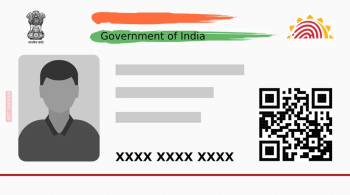
Aadhaar Card Overview:
- Aadhaar is a unique 12-digit identification number.
- It serves as proof of identity and residence for Indian residents.
Issued By:
- The Unique Identification Authority of India (UIDAI) is responsible for issuing Aadhaar cards.
Key Features of Aadhaar:
- The Aadhaar number is unique to each individual and has lifetime validity.
- It confirms an individual's identity and residence.
Eligibility for Aadhaar:
- All Indian citizens, regardless of age, are eligible for an Aadhaar card.
- Foreign nationals living in India for at least six months can also apply.
Authentication Process:
- Aadhaar employs both demographic and biometric data, including iris scans, for user verification.
Utility in Welfare Schemes:
- Aadhaar facilitates access to various services such as banking, mobile connections, and welfare programs including MGNREGA.
Portability:
- The Aadhaar system allows nationwide portability, enabling online authentication from any location.
Technology:
- Aadhaar is built using open-source technologies, ensuring scalability and compatibility with various hardware systems.
Data Security:
- Aadhaar data storage is managed securely through the Aadhaar Data Vault (ADV), developed under UIDAI guidelines.
Supreme Court Ruling:
- As per the ruling, the Aadhaar card can only be used for a limited duration of six months for certain purposes.
UIDAI Overview:
- The UIDAI is a statutory body created by the Aadhaar Act of 2016, which governs the issuance and management of Aadhaar.
- It operates under the Ministry of Electronics and Information Technology (MeitY).
Recent Concerns:
- There have been reports of massive data breaches affecting Aadhaar information, with sensitive data of approximately 815 million individuals allegedly compromised.
Why Delhi HC Has Banned Sapinda Marriages?
Why in News?
Recently, the Delhi High Court upheld the constitutionality of Section 5(v) of the Hindu Marriage Act, 1955 (HMA), which prohibits marriages between Hindus who are considered "sapindas" of one another.
About the Case:
- In 2007, a woman's marriage was declared void after her husband successfully proved that their marriage was a sapinda marriage.
- In 2023, the woman challenged this ruling in the Delhi High Court, which dismissed her appeal in October 2023.
- Subsequently, she questioned the constitutional validity of the prohibition against sapinda marriages.
Constitutional Validity:
- The petitioner argued that the prohibition infringes upon the right to equality guaranteed by Article 14 of the Constitution.
- She claimed that sapinda marriages are common even without established customs.
Delhi High Court Ruling:
- The court rejected the petitioner's claims, stating she did not provide adequate evidence to support the existence of a custom that justifies sapinda marriages.
- The ruling emphasized that the choice of a marriage partner can be regulated by law.
- It concluded that there were no legal grounds to assert that the prohibition violates the right to equality.
What is Sapinda Marriage?
- A sapinda marriage occurs between individuals who are related within a specific degree of kinship.
- According to the HMA, marriages are prohibited within certain generational limits on both maternal and paternal sides.
- Mother’s Side: Prohibition extends to three generations (including siblings and their parents).
- Father’s Side: Prohibition extends to five generations, covering up to the grandparents' grandparents.
- Sapinda relationships are defined in Section 3 of the HMA.
Prohibition Criteria:
- Marriages that violate Section 5(v) of the HMA by involving sapinda relationships without established customs are deemed void.
- This means such marriages are considered invalid and treated as if they never took place.
Exception to Prohibition:
- The HMA allows for exceptions to the ban on sapinda marriages if customs of the individuals involved permit such unions.
Criteria for Custom:
- According to Section 3(a) of the HMA, a custom must be consistently observed over time to gain legal standing.
- The custom must hold the force of law among Hindus in a specific local area, tribe, group, or family.
Conditions for Valid Custom:
- For a custom to be valid, it must be clear, reasonable, and aligned with public policy.
- If it applies only to a specific family, it should not have been abandoned by that family.
Similar to Sapinda Marriages in Other Countries:
- Europe: Many European nations have less stringent laws concerning incest.
- France: The crime of incest was abolished in 1810, allowing marriages between consenting adults.
- Belgium: Similar laws were enacted influenced by the French legal system.
- Portugal: Incest is not criminalized.
- Italy: Incest only becomes a crime if it causes public scandal.
- United States: While incestuous marriages are banned across all states, New Jersey and Rhode Island allow relationships between consenting adults.
Note
- An incestuous relationship refers to sexual intercourse between two family members.
ASI Survey Report on Gyanvapi Mosque
Why in news?
Recently, the Archaeological Survey of India (ASI) conducted a survey of the Gyanvapi mosque complex, uncovering 55 stone sculptures, including idols of Hindu deities. The ASI report indicates that a temple appears to have been destroyed in the 17th century during Aurangzeb's reign, with parts of it repurposed in the current mosque structure.
What are the Key Highlights of the ASI Report?
- Discovery of Broken Idols:
- The survey revealed fragments resembling statues of Hindu deities such as Hanuman, Ganesha, and Nandi within the mosque complex.
- Various other sculptures and statues were found in different states of damage, including those of Shiva linga, Vishnu, Ganesha, Krishna, and Hanuman.
- Yonipattas and Shiv Linga:
- Several yonipattas (the base of a shivling) were discovered during the survey.
- A damaged shiv linga was also found.
- Indian Inscription:
- 32 inscriptions in Devanagari, Grantha, Telugu, and Kannada scripts were identified.
- These inscriptions were originally from a preexisting Hindu temple, which were reused in the construction of the current structure.
- Swastik and Trident Marks:
- Marks such as the swastika and the trident were found on the structure.
- The swastika is one of the oldest symbols, used throughout ancient civilizations.
- The trident (trishula), a key symbol for Lord Shiva, is particularly significant among Hindus, especially Shaivites and Shaktas.
- Coins and Sandstone Slab with Persian Inscription:
- Artifacts including coins and a sandstone slab inscribed in Persian were unearthed.
- These inscriptions detail the demolition of the temple during Aurangzeb's reign.
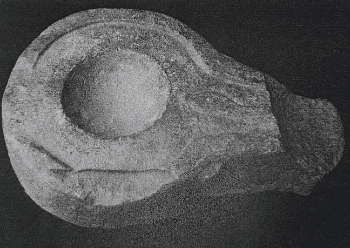

What Method was Used in the Survey at Gyanvapi Mosque?
The ASI conducted a thorough non-invasive survey of the Gyanvapi mosque in Varanasi to investigate whether the mosque was constructed over a temple.
Types of Methods
- Active Methods:
- These methods inject energy into the ground to gauge material properties like density, electrical resistance, and wave velocity.
- Seismic Techniques:
- Utilize shock waves to analyze subsurface structures.
- Electromagnetic Methods:
- Measure electromagnetic responses following energy injection.
- Passive Methods:
- Assess existing physical properties without intervention.
- Magnetometry:
- Detect magnetic anomalies that indicate buried structures.
- Gravity Surveying:
- Measure variations in gravitational force due to subsurface features.
- Ground-Penetrating Radar (GPR):
- Used to produce a 3-D model of buried archaeological features by sending short radar impulses from the surface and recording the return signals.
- Radar beams spread in a cone shape, which can lead to reflections that may not accurately represent physical dimensions, causing potential misinterpretations.
- Carbon Dating:
- A method employed to determine the age of organic materials through the radioactive decay of Carbon-14 (C-14).
What is the Gyanvapi Mosque Dispute?
- Demolition of Temple:
- It is widely believed that the mosque was constructed in 1669 by Mughal ruler Aurangzeb after demolishing the ancient Vishweshwar temple.
- Saqi Mustaid Khan’s Maasir-i-Alamgiri, a Persian chronicle, states that Aurangzeb ordered the temple's demolition in 1669.
- The ASI report mentions an Arabic-Persian inscription indicating the mosque's construction in the 20th year of Aurangzeb's reign (1676-77 CE).
- Legal Battle:
- The Gyanvapi mosque case has been in the courts since 1991, initiated by individuals claiming that Aurangzeb demolished the Vishweshwar temple to build the mosque.
- On August 18, 2021, a petition was filed by five women to worship at the temple of Mata Shringar Gauri, leading the court to form a commission for a status report on the temple.
- The Varanasi court requested the commission to videograph the idol of Mata Shringar Gauri and the Gyanvapi complex.
- A detailed map of the Gyanvapi complex has been presented in court, highlighting Hindu deity temples near the mosque.
- The Muslim side contends that decisions on the matter cannot proceed under the Places of Worship Act, 1991, which prohibits converting a place of worship into one for a different denomination.
- The Gyanvapi case is currently pending before the judiciary.
Pradhan Mantri Suryodaya Yojana
Why in news?
Prime Minister Modi has introduced the 'Pradhan Mantri Suryodaya Yojana', a government initiative aimed at equipping one crore households with rooftop solar power systems. This scheme seeks to bolster India's renewable energy capacity and promote sustainable energy practices.
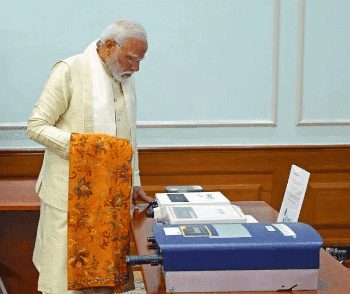
- Previous schemes to promote rooftop solar system
- In 2014, the Rooftop Solar Programme was launched with the goal of achieving a cumulative installed capacity of 40,000 megawatts (MW) or 40 gigawatts (GW) by 2022.
- The initiative aimed to increase rooftop solar capacity in the residential sector by offering Central Financial Assistance and incentives to distribution companies (DISCOMs).
- India’s current solar capacity
- Despite the ambitious target, by the end of 2023, the actual rooftop solar energy generation reached only 11 GW, significantly lower than expected.
- The initial deadline of 2022 has now been extended to 2026 to facilitate achieving the desired capacity.
- Features of the Pradhan Mantri Suryodaya Yojana
- Consumers can benefit from the scheme through DISCOM-tendered projects or via the National Portal.
- DISCOMs will provide technical feasibility approvals, install net metering systems, and inspect installations.
- Net metering allows consumers to receive credits for the solar energy they contribute to the grid, enabling them to earn money from surplus energy.
- Challenges and incentives
- This new scheme aims to achieve the target of 40 GW rooftop solar capacity by supporting residential installations.
- It is designed to not only lower electricity bills for low- and middle-income households but also contribute to India's energy self-sufficiency.
- Installed capacity
- As of December 2023, the total solar power installed capacity in India reached approximately 73.31 GW, with rooftop solar accounting for about 11.08 GW.
- Solar energy constitutes a significant portion of India's overall renewable energy capacity, which stands at around 180 GW.
- High performing states
- Rajasthan leads in total solar capacity with 18.7 GW, followed by Gujarat with 10.5 GW.
- For rooftop solar capacity, Gujarat is at the forefront with 2.8 GW, and Maharashtra follows with 1.7 GW.
- Future energy demands
- According to the International Energy Agency (IEA), India is projected to experience the highest energy demand growth globally over the next three decades.
- To meet this increasing demand, India will need reliable energy sources beyond coal, aiming for 500 GW of renewable energy capacity by 2030.
Sub-Categorisation of Scheduled Castes
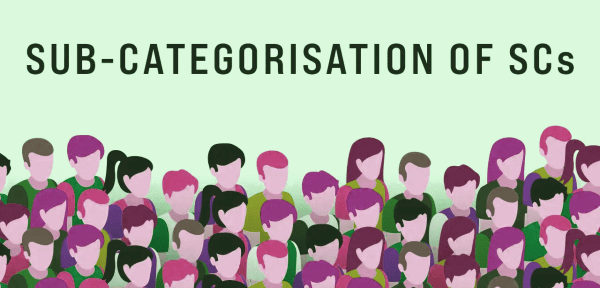
Why in news?
The Indian government has established a high-level committee, headed by the Cabinet Secretary, to examine the issue of dominant Scheduled Caste (SC) communities receiving disproportionate benefits compared to more marginalized groups. This initiative is particularly in response to the demands from the Madiga community in Telangana.
What is the Mandate of the Newly Formed Committee?
- The committee's main goal is to investigate new approaches to address the grievances of various SC communities across the nation.
- Although it was initiated due to concerns from the Madiga community, its mandate spans all SC communities and states.
- The committee aims to devise a fair method for distributing benefits, schemes, and initiatives among the over 1,200 Scheduled Castes, ensuring that the most backward communities are not overshadowed by the more dominant ones.
What are the Major Aspects Related to Subcategorisation of SC in India?
- About: Subcategorisation involves dividing a broader category into smaller, more specific groups based on certain criteria. In India, this could mean classifying SCs further according to socioeconomic status or historical disadvantages.
- Madiga Community's Struggle: The Madiga community, which represents about 50% of SCs in Telangana, has faced significant obstacles in accessing government benefits meant for SCs due to the dominance of the Mala community. Despite being a large group, the Madiga community has argued that they have been excluded from SC-related initiatives. Their struggle for sub-categorisation began in 1994, leading to the establishment of the Justice P. Ramachandra Raju Commission in 1996 and a National Commission in 2007.
- Similar Issue Across States: SC communities in various states have encountered similar difficulties, prompting both State and Union governments to form commissions. States like Punjab, Bihar, and Tamil Nadu have attempted to implement sub-categorisation at the state level, but these efforts are currently embroiled in legal disputes.
- Constitutional Stance: Articles 341 and 342 grant the President the authority to notify lists of SCs and STs, while Parliament can create these lists. However, there is no explicit prohibition against sub-categorisation.
- Previous Standpoint of Union Government: In 2005, the Union government explored legal avenues for sub-categorisation of SCs. The then Attorney General of India suggested it could be feasible if there was "unimpeachable evidence to indicate a necessity." The National Commissions for Scheduled Castes and Scheduled Tribes opposed any constitutional amendments at that time, arguing for prioritizing the efficient allocation of existing benefits to these communities.
Benefits of Subcategorisation
- Targeted Policies: Provides detailed data for crafting specific policies and programs.
- Fair Representation: Enhances political engagement from various sub-groups.
- Empowerment & Recognition: Highlights the cultural heritage of sub-groups, fostering identity and belonging.
Challenges of Subcategorisation
- Social Divisions: Risks intensifying existing social tensions.
- Identification & Verification: Complications arise in accurately identifying and documenting sub-groups.
- Politicisation: There is a potential for different groups to manipulate the process for their gain.
Conclusion
The upcoming ruling by a seven-judge bench of the Supreme Court, combined with the committee's insights, will shape the future of subcategorisation of Scheduled Castes. By focusing on practical solutions that align with legal frameworks, we can leverage the benefits of subcategorisation while addressing the associated risks, ultimately fostering a more inclusive, supportive, responsive, and resilient society.
MGNREGA Unemployment Benefits Disbursement
Why in news?
The Mahatma Gandhi National Rural Employment Guarantee Act (MGNREGA), enacted in 2005, serves as a vital support system for rural laborers in India. However, a recent report from the Parliamentary Standing Committee on Rural Development and Panchayati Raj highlights serious concerns about the execution of this scheme.
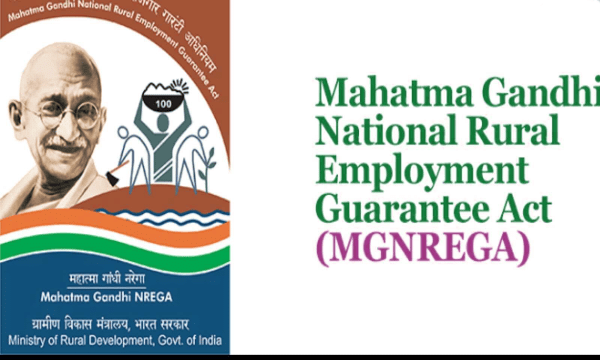
Key Highlights of the Report
Limited Distribution of Benefits:
- The report indicates that only 258 out of 7,124 eligible workers received benefits over the past five years, which is merely about 3% of the total number.
- As per Section 7(1) of MGNREGA, individuals who are not employed within 15 days are entitled to receive a daily unemployment allowance.
State-specific Data:
- State governments are tasked with providing unemployment allowances based on their financial capacity.
- Karnataka had the highest number of eligible workers at 2,467, yet none of them received any benefits.
- Rajasthan followed with 1,831 eligible workers, out of which only nine received benefits.
- Other states like Bihar, West Bengal, Jharkhand, and Uttar Pradesh also demonstrated poor performance in distributing benefits, with many eligible workers receiving inadequate assistance or none at all.
Pending Compensation for Delayed Wages:
- The committee reported that from the financial year 2018-19 until November 21, 2024, over Rs 13 crores was sanctioned for compensation, but only around Rs 10 crores were disbursed, leaving a significant amount unpaid.
- The responsibility for paying interest on this pending compensation lies with the state government, as per the Department of Rural Development.
- According to MGNREGA, if wages are not paid within 15 days after the muster roll closure, workers are entitled to compensation for the delay, calculated at 0.05% of the unpaid wages for each day delayed beyond the sixteenth day.
Recommendations by the Committee:
- The committee advocated for enhanced collaboration between the Central Rural Development Department and state governments to facilitate the proper distribution of benefits.
- It emphasized the need for measures to tackle the issue of non-payment of unemployment benefits.
|
55 videos|5389 docs|1141 tests
|
FAQs on Indian Polity and Governance - 1 - Current Affairs & Hindu Analysis: Daily, Weekly & Monthly - UPSC
| 1. Why is the Delhi High Court banning Sapinda marriages? |  |
| 2. What does the ASI Survey Report on Gyanvapi Mosque reveal? |  |
| 3. What is the Pradhan Mantri Suryodaya Yojana and how does it benefit the people? |  |
| 4. How does the sub-categorisation of Scheduled Castes impact their representation and welfare measures? |  |
| 5. How does the MGNREGA scheme help in disbursing unemployment benefits to eligible individuals? |  |

















